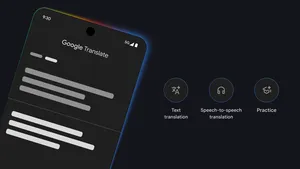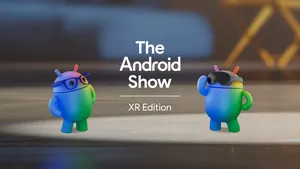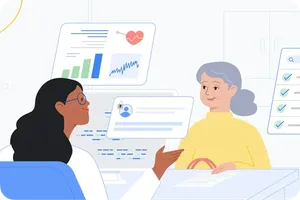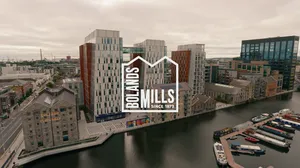Ask a Techspert: How does Lens turn images to text?
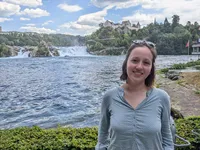
When I was on holiday recently, I wanted to take notes from an ebook I was reading. But instead of taking audio notes or scribbling things down in a notebook, I used Lens to select a section of the book, copy it and paste it into a document. That got me curious: How did all that just happen on my phone? How does a camera recognize words in all their fonts and languages?
I decided to get to the root of the question and speak to Ana Manasovska, a Zurich-based software engineer who is one of the Googlers on the front line of converting an image into text.
Ana, tell us about your work in Lens.
I’m involved with the text aspect, so making sure that the app can discern text and copy it for a search or translate it — with no typing needed. For example, if you point your phone’s camera at a poster in a foreign language, the app can translate the text on it. And for people who are blind or have low vision, it can read the text out loud. It’s pretty impressive.
So part of what my team does is get Lens to recognize not just the text, but also the structure of the text. We humans automatically understand writing that is separated into sentences and paragraphs, or blocks and columns, and know what goes together. It’s very difficult for a machine to distinguish that, though.
Is this machine learning?
Yes. In other words, it uses systems (we call them models) that we’ve trained to discern characters and structure in images. A traditional computing system would have only a limited ability to do this. But our machine learning model has been built to “teach itself” on enormous datasets and is learning to distinguish text structures the same way a human would.
Can the system work with different languages?
Yes, it can recognize 30 scripts, including Cyrillic, Devanagari, Chinese and Arabic. It’s most accurate in Latin-alphabet languages at the moment, but even there, the many different types of fonts present challenges. Japanese and Chinese are tricky because they have lots of nuances in the characters. What seems like a small variation to the untrained eye can completely change the meaning.
What’s the most challenging part of your job?
There’s lots of complexity and ambiguity, which are challenging, so I’ve had to learn to navigate that. And it’s very fast paced; things are moving constantly and you have to ask a lot of questions and talk to a lot of people to get the answers you need.
When it comes to actual coding, what does that involve?
Mostly I use a programming language called C++, which enables you to run processing steps needed to take you from an image to a representation of words and structure.
Hmmm, I sort of understand. What does it look like?
This is what C++ looks like.

The code above shows the processing for extracting only the German from a section of text. So say the image showed German, French and Italian — only the German would be extracted for translation. Does that make sense?
Kind of! Tell me what you love about your job.
It boils down to my lifelong love of solving problems. But I also really like that I’m building something I can use in my everyday life. I’m based in Zurich but don’t speak German well, so I use Lens for translation into English daily.
